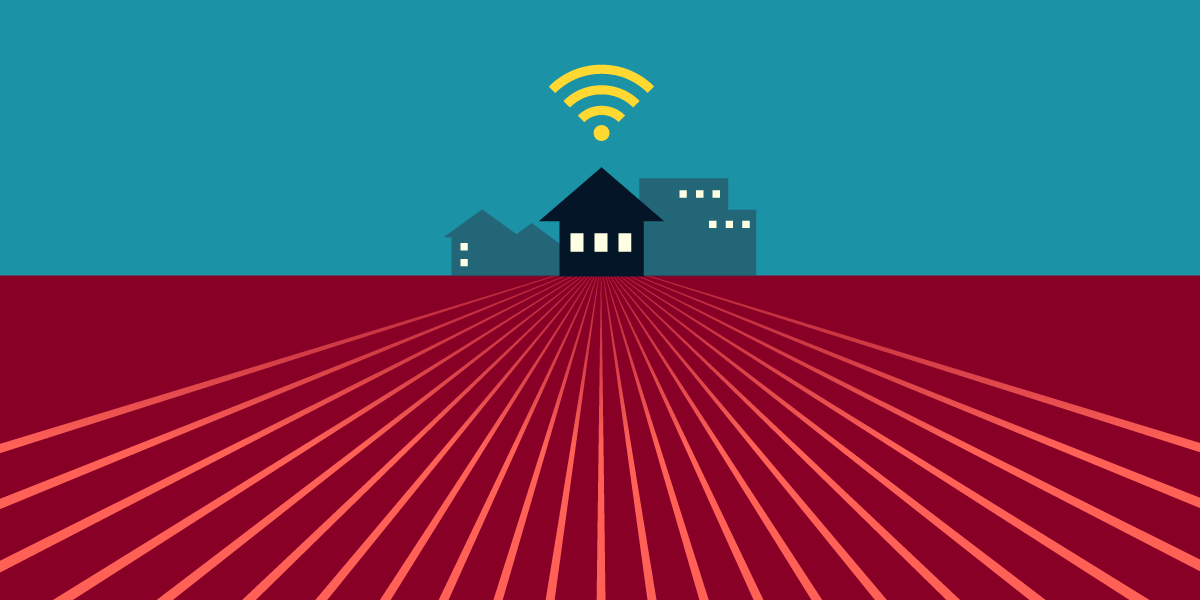Through the pandemic, the state of California passed a number of bills that resulted in a once-in-a-generation, multi-billion dollar investment to solve the digital divide. The California Public Utilities Commission (CPUC), in response, initiated a proceeding to explore the rules, expectations, and standards necessary to turn available funds into real infrastructure that benefits Californias for decades to come.
In a recent proposed decision the CPUC established a bare minimum offering of $40 at 50/50 mbps for broadband networks fully subsidized by taxpayers. This moves in the right direction and EFF fully supports the CPUC’s analysis and decision. We find it appropriate for the government to set expectations on networks that are completely paid for by the taxpayer.
A Robust Low Cost Offering Protects Consumers From Price Gouging and Ensure Their Taxpayer Dollars Go Back to Serving Them
A recent poll by Consumer Reports found that 80% of Americans view broadband access to be as important as water and electricity. Americans depend on their internet connection for employment, education, entertainment, community, health, and much more. Unfortunately, most Americans do not have a choice in internet service providers (ISPs) and are trapped in situations of monopolistic exploitation, paying high prices for what can be viewed as an essential service.
Recognizing this situation, the CPUC established a bare minimum offering of $40 at 50/50 mbps to ensure that an affordable offering is always present in order to prevent exploitation.
ISPs, such as AT&T, asserted to the legislature that they cannot operate a fully subsidized network with a basic low-cost tier offering, that such an offering would harm consumers and prevent them from closing the digital divide. These assertions are categorically false. It is not that an ISPs (agan fully subsidized) cannot operate a network with a basic low-cost offering, it is just that some of these ISPs (some of which are the most indebted in the world) do not want to operate a network that cannot overcharge to yield outsized profits.
Consider how it has been demonstrated that the ‘at cost’ delivery (meaning the pure cost of providing broadband) on a fully paid out network is as low as $3 a month per household. In the city of Chattanooga, Tennessee, for example, public data of the municipal ISP (which has completely paid off its construction debt) indicated that providing 100/100 mbps broadband to all low-income families with children in public school for free had negligible impact on their costs.
Furthermore, the state is willing to finance up to nearly $10,000 per household, at the taxpayer’s expense, to enable fiber gigabit capacity connectivity to virtually Californian. Construction is the most expensive part of provisioning broadband. For the state to shoulder the cost of construction not only rids carriers of any construction debt obligations, but also allows them to provision service at a monthly price that doesn’t need to account for paying off said debt. Additionally, EFFs extensive cost model studies and research in this space finds that unsubsidized fiber networks can reach very far into rural markets today. A fully paid off fiber network with potentially 1/10th the operations and maintenance cost of legacy networks and negligible costs to upgrade further should have very few actual new costs that are passed on to the consumer. That is what makes it appropriate for the CPUC rules to require long term low cost offerings for these networks.
Dozens of local private and public providers in California have already stepped up to deliver fiber to the homes of all Californians, without exception even in rural areas. Outside of California, those states that emphatically embraced local small businesses and local governments to the exclusion of large private national carriers have only benefited from that choice. For example, North Dakota has no national private carriers and more than 2/3s of their residents already have affordable gigabit fiber to the home connectivity.
The CPUC’s bare minimum offering of $40 at 50/50 mbps as a guaranteed affordable service is thus reasonable because of the low cost of operating a fully subsidized network. The ISPs concerns are dubious at best, designed to misinform those without the proper context.
Setting Expectations Establishes Controls Against Waste, Fraud, and Abuse
Setting expectations, rules, and rigorous standards for infrastructure paid for by taxpayers helps ensure that California does it right, solving the digital divide issues for decades to come. If the government takes a hands-off approach, it risks squandering this once-in-a-generation opportunity.
Take for example the FCC’s Rural Development Opportunity Fund (RDOF) that allowed speculative wireless deployments to substitute for proven fiber to the home options. A total of $885 million was awarded from the FCC towards SpaceX’s Low Earth Orbiting Satellites (LEOs) to deliver 100/20 to about 640,000 locations. In even the best case scenario where SpaceX’s Starlink fleet is at full size, has the maximum stated throughput capacity, and only serves RDOF locations, more than half of RDOF subscribers are predicted to have congested services by 2028. Fiber would have lasted them potentially into the 22nd century. Taking into account how SpaceX’s LEOs would likely also serve non-RDOF subscribers and may not reach full fleet size or maximum stated throughput capacity, less than promised service would likely occur before then. An in-depth analysis comparing unproven deployment methods against proven deployment methods like cooperatives, municipal, and local rural providers would have revealed this.
The FCC’s lack of expectations, rules, and rigorous standards meant RDOF monies went to companies that will likely fail to deliver future proof networks (let alone be ready for today’s needs) and either undervalue or fail to deliver upon promised service ready for the future. The CPUC has charted a different course. The legislature should support the CPUC’s efforts to ensure California’s investment in its own future pays off.
The California Legislature’s Commitment to Delivering 21st Century Fiber Optic Connectivity for All
The passage of SB 156/AB 156 is the first time in telecommunications policy that a state invested and made available enough funding to provide not just basic broadband service, but future proof fiber infrastructure capable of delivering multiple gigabytes of capacity, and enabling 5G and successor wireless advancements, to all its citizens. California made a commitment to deliver high quality and affordable service to all.
The only way to make good on that commitment is with regulatory expertise from the CPUC, reliance on local communities to partner with the state, and an understanding that the monopolistic ISPs have intentionally neglected our communities for decades. The ISPs opposed SB 156 and have taken active interest in hindering all steps of its implementation. Their concerns should be taken with skepticism.
Delivering universal 21st century ready broadband access will require courage from our legislators, expertise from our regulators, and hard work from our communities. The CPUC’s bare minimum offering of $40 at 50/50 mbps for broadband networks fully subsidized by taxpayers is a step in the right direction. Californians should have had reliable, affordable broadband yesterday; we must now work to ensure we set a path for them to get it in the future.










